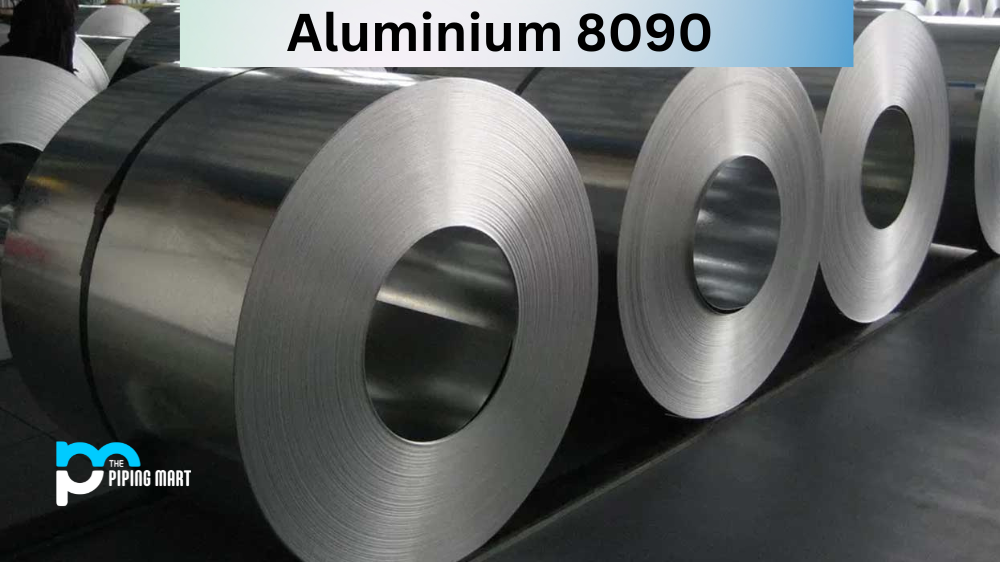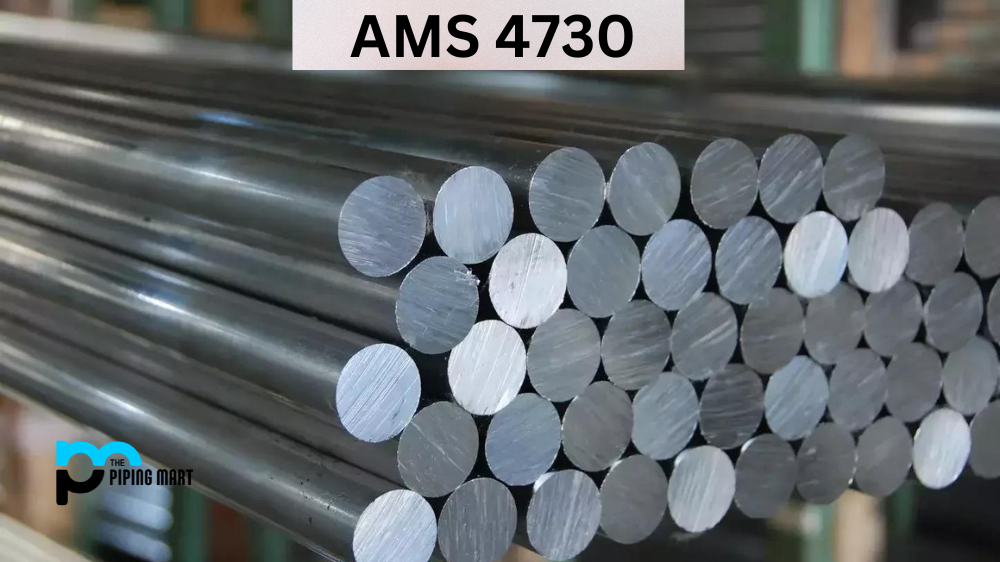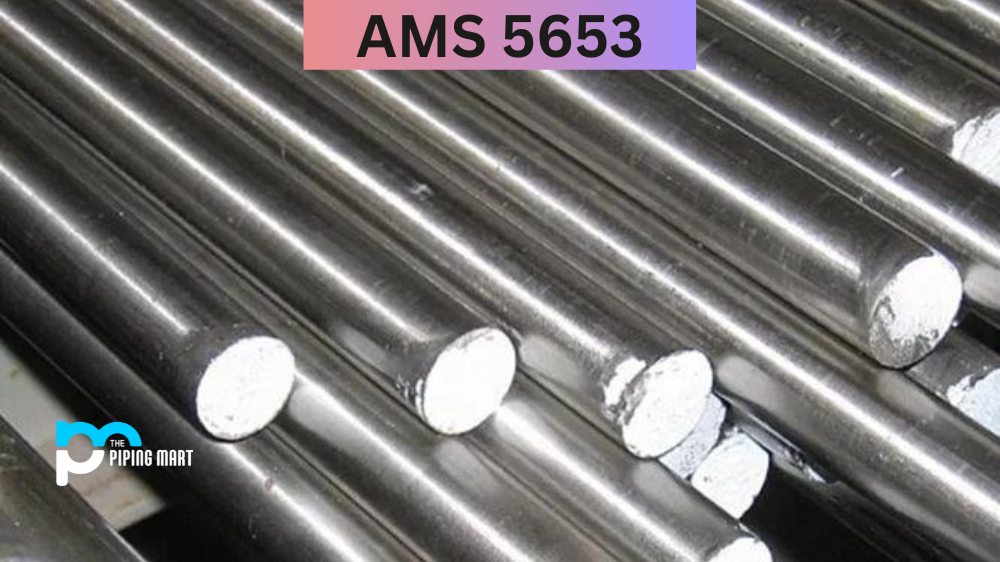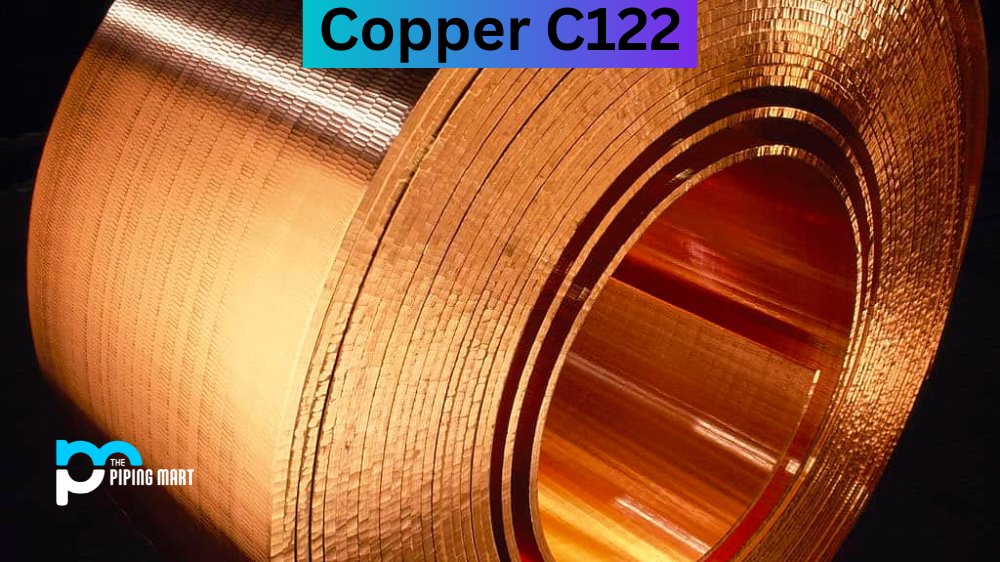Aluminium 8090 is an alloy that has many uses across industries due to its high strength and corrosion resistance. UNS A98090 can be used for a wide range of applications, from automotive components to aerospace parts. This guide will look into the properties and uses of 8090 Alloy and how it is machined, welded, and heat treated. Intended Audience: Engineers, fabricators, technicians.
8090 Alloy Composition
| Element | Content (%) |
|---|---|
| Aluminum, Al | 93 – 96.2 |
| Lithium, Li | 2.2 – 2.7 |
| Copper, Cu | 1- 1.6 |
| Magnesium, Mg | 0.60 – 1.3 |
| Iron, Fe | ≤ 0.30 |
| Zinc, Zn | ≤ 0.25 |
| Silicon, Si | ≤ 0.20 |
| Titanium, Ti | ≤ 0.10 |
| Chromium, Cr | ≤ 0.10 |
| Manganese, Mn | ≤ 0.10 |
| Zirconium, Zr | 0.040 – 0.16 |
| Other (each) | ≤ 0.050 |
| Other (total) | ≤ 0.15 |
8090 Alloy Physical Properties
| Properties | Metric | Imperial |
|---|---|---|
| Density | 2.54 g/cm³ | 0.0918 lb/in³ |
| Melting point | 600 – 655°C | 1110 – 1210°F |
8090 Alloy Mechanical Properties
| Properties | Metric | Imperial |
|---|---|---|
| Tensile strength | 450 MPa | 65300 psi |
| Yield strength | 370 MPa | 53700 psi |
| Elongation at break | 7% | 7% |
| Elastic modulus | 77 GPa | 11200 ksi |
| Shear strength | 270 MPa | 39200 psi |
| Hardness, Brinell (@load 500 kg; thickness 10.0 mm) | 121 | 121 |
| Hardness, Knoop (converted from Brinell hardness value) | 151 | 151 |
| Hardness, Rockwell A (converted from Brinell hardness value) | 47.2 | 47.2 |
| Hardness, Rockwell B (converted from Brinell hardness value) | 75 | 75 |
| Hardness, Vickers (converted from Brinell hardness value) | 137 | 137 |
8090 Alloy Thermal Properties
| Properties | Metric | Imperial |
|---|---|---|
| Thermal expansion co-efficient (@20-100°C/68-212°F) | 21.4 µm/m°C | 11.9 µin/in°F |
| Thermal conductivity | 95.3 W/mK | 661 BTU in/hr.ft².°F |
8090 Alloy Uses
Aluminium 8090 is a precipitation-hardenable aluminium alloy with good formability and high strength. It is widely used in a variety of industries due to its ability to resist corrosion and heat. Some common uses include automotive components such as pistons, brake callipers, wheel covers, and exhaust systems; aircraft parts such as fuel tanks and landing gear; architectural elements such as frames and cladding; marine applications such as boat hulls; and industrial applications such as pressure vessels and castings.
Corrosion Resistance
Aluminum 8090 has excellent corrosion resistance due to its high chromium content. The alloy also contains copper, which helps increase its strength while maintaining corrosion resistance. The addition of nickel further enhances the alloy’s corrosion resistance properties by forming a protective oxide layer on the surface that prevents oxidation. This makes it ideal for use in highly corrosive environments or where exposure to saltwater or other chemicals is likely.
Heat Resistance
Aluminium 8090 has excellent heat resistance up to 300°C (572°F). This makes it suitable for use in high-temperature applications such as aircraft engine components or other components exposed to extreme temperatures during operation. Furthermore, the alloy exhibits low thermal expansion rates, which help reduce distortion during machining or welding operations.
Heat Treatment
Aluminum 8090 is designed for hardening through age-hardening processes rather than through traditional heat treatment methods like annealing or quenching. Age hardening involves exposing the material to elevated temperatures for extended periods, followed by cooling under controlled conditions to achieve a desired hardness level without changing the material’s properties too drastically or introducing any residual stresses into the material structure. This process must be done carefully to ensure that all necessary thermal cycles are completed in order for the desired result to be achieved.
Machining
The machinability of aluminum 8090 is good when using conventional techniques but can be challenging when using higher-speed machining techniques due to its relatively soft nature compared to other alloys like steel or titanium alloys. The best results are achieved when using slower feed rates with sharp cutting tools made from carbide materials with positive rake angles and generous clearance angles between cutting edges and workpiece surfaces to reduce friction caused by chip adhesion during machining operations.
Welding
Aluminium 8097 can be welded using conventional fusion weldings techniques like oxyacetylene brazing or TIG welding and newer solid-state welding processes like laser beam welding or electron beam welding, depending on application requirements. When welding aluminum alloys, it’s important that proper weld preparation procedures are followed in order to avoid problems associated with cracking or porosity formation due to contamination from oil residue on workpiece surfaces prior to welding operations starting. Additionally, proper preheating protocols should be followed before starting any welding procedure to reduce residual stresses caused by rapid cooling after weld completion, as this could lead to issues related to cracking during the post-weld processing stages.
Conclusion
Aluminium 8097 is an alloy that offers excellent corrosion resistance, good formability and high strength, making it suitable for a wide range of applications across industries, including automotive components, aerospace parts, architectural elements, marine applications and industrial pressure vessels etc. Its ability to heat treatable through age hardening processes makes it easily workable through conventional machining methods like turning milling drilling etc. as well welding processes like oxyacetylene brazing, TIG laser beam electron beam Welding etc… All these features make aluminium incredibly useful across myriad industries; making it one of the most versatile metals available today!

A passionate metal industry expert and blogger. With over 5 years of experience in the field, Palak brings a wealth of knowledge and insight to her writing. Whether discussing the latest trends in the metal industry or sharing tips, she is dedicated to helping others succeed in the metal industry.




